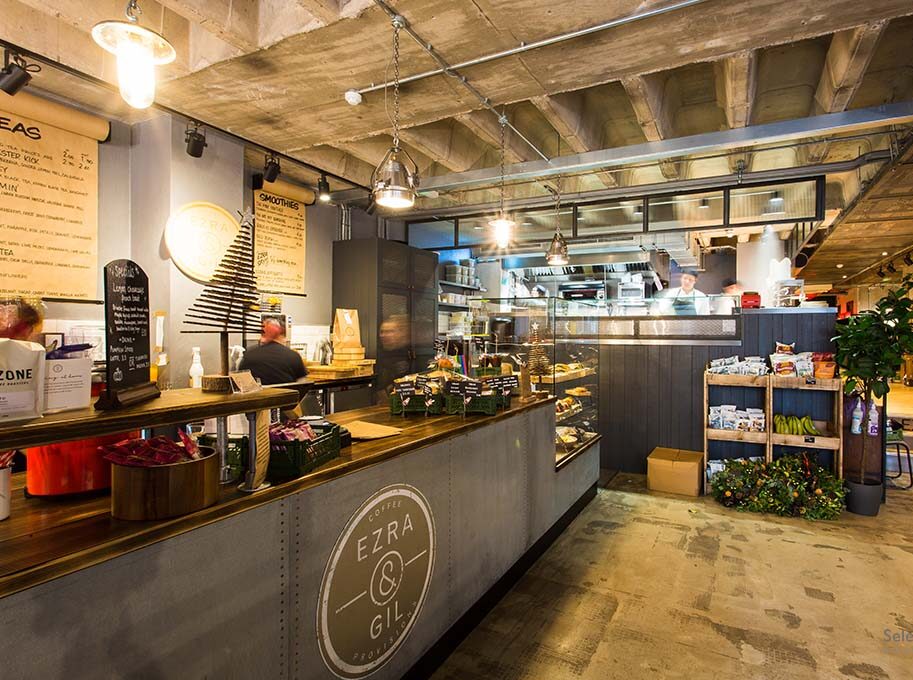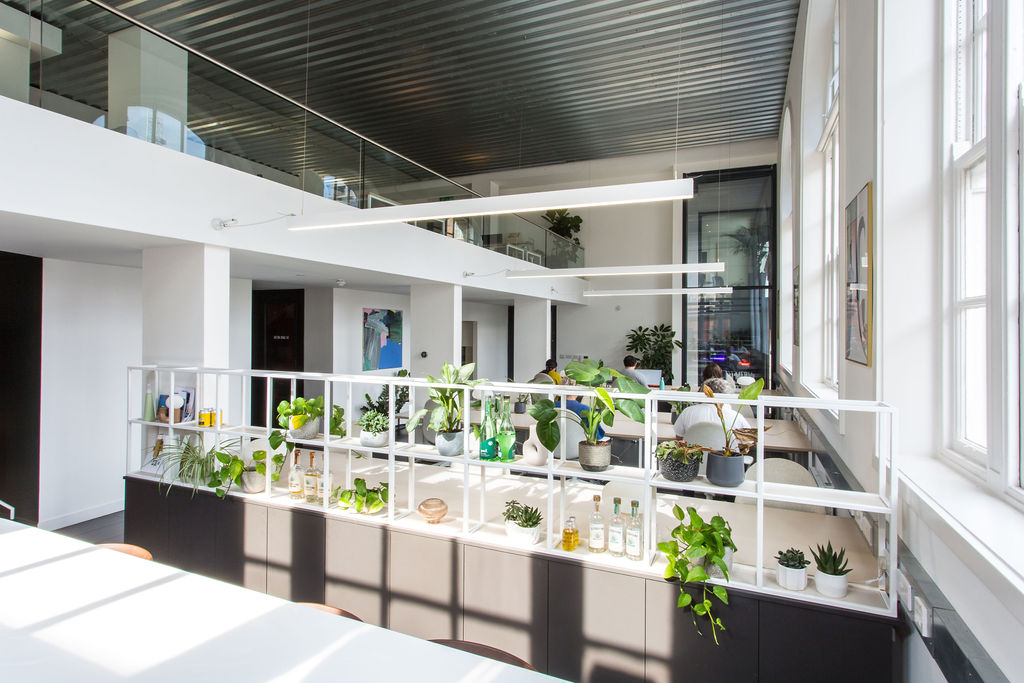Office design can significantly impact productivity and employee satisfaction, and one of the most critical elements is lighting. Good lighting design can create a comfortable and productive environment. A 2019 study by Future Workplace found that 1 in 3 of the workers surveyed considered comfortable light important for their daily health, rating lighting as the second most important well-being-focused feature in their workplace after air quality.
Designing lighting for an office space involves considering various factors to create a comfortable and productive environment. Proper lighting design not only enhances the space’s aesthetics but also significantly impacts employees’ physical and mental well-being.
Here are some key considerations to further explore the importance of lighting in office design:
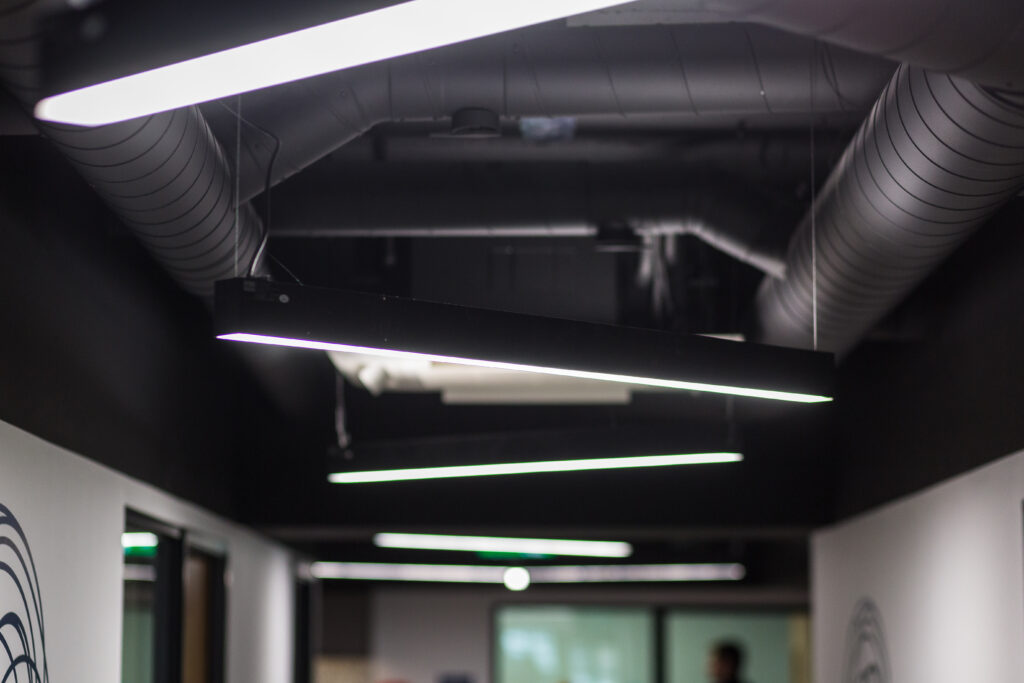
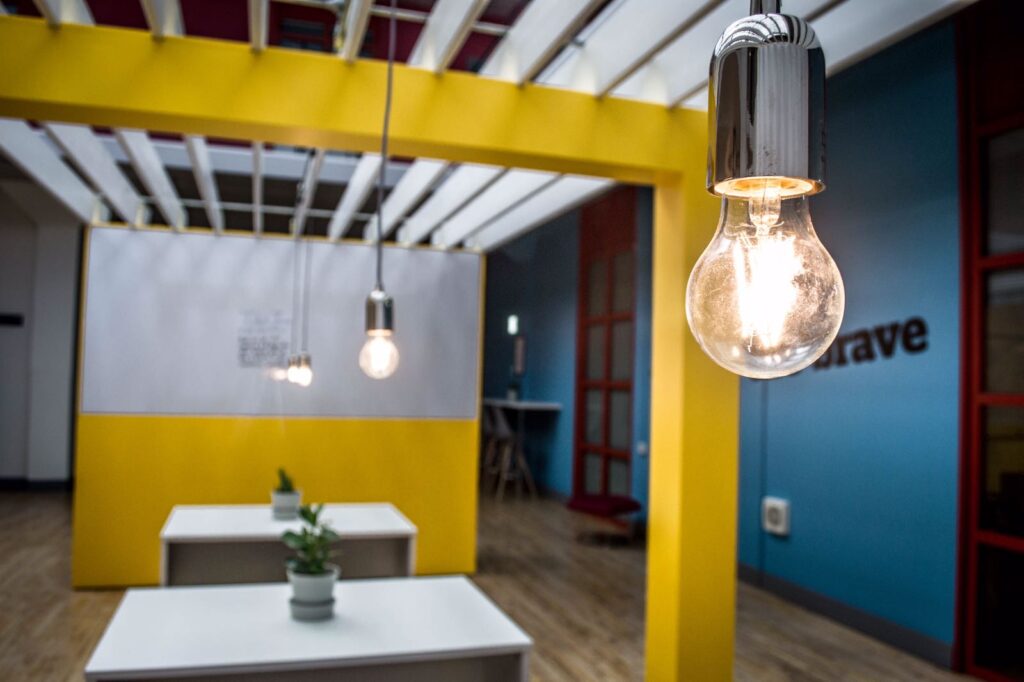
Task Lighting
Task lighting plays a crucial role in ensuring that employees can effectively perform their work. Understanding the specific tasks that will be performed in different areas of the office is vital to tailor lighting solutions accordingly. For example, areas where employees are engaged in focused work may require brighter illumination, while softer lighting may be more suitable for relaxation zones or break areas.
Providing adjustable lighting solutions allows employees to personalise their lighting preferences based on the nature of their task
Natural Light Integration
Maximising the use of natural light within the office space has numerous benefits. Exposure to natural light has been shown to enhance mood, energy, and overall well-being. By positioning workstations and communal areas to take advantage of daylight, employees can enjoy the benefits of natural light, such as increased vitamin D production and improved circadian rhythm regulation. However, it is important to implement measures to control glare, as excessive glare can cause discomfort and hinder productivity. Window treatments, adjustable blinds, or strategically placed screens can help reduce glare while still allowing natural light in.
Uniform Illumination
Creating an environment with uniform lighting levels throughout the office can contribute to employee comfort and reduce eye strain. Inconsistencies in lighting levels can be distracting and create visual discomfort. It is important to ensure that all areas of the office have adequate lighting, avoiding areas that are overly bright or dim. By maintaining uniform illumination, employees can work efficiently without straining their eyes or experiencing visual fatigue
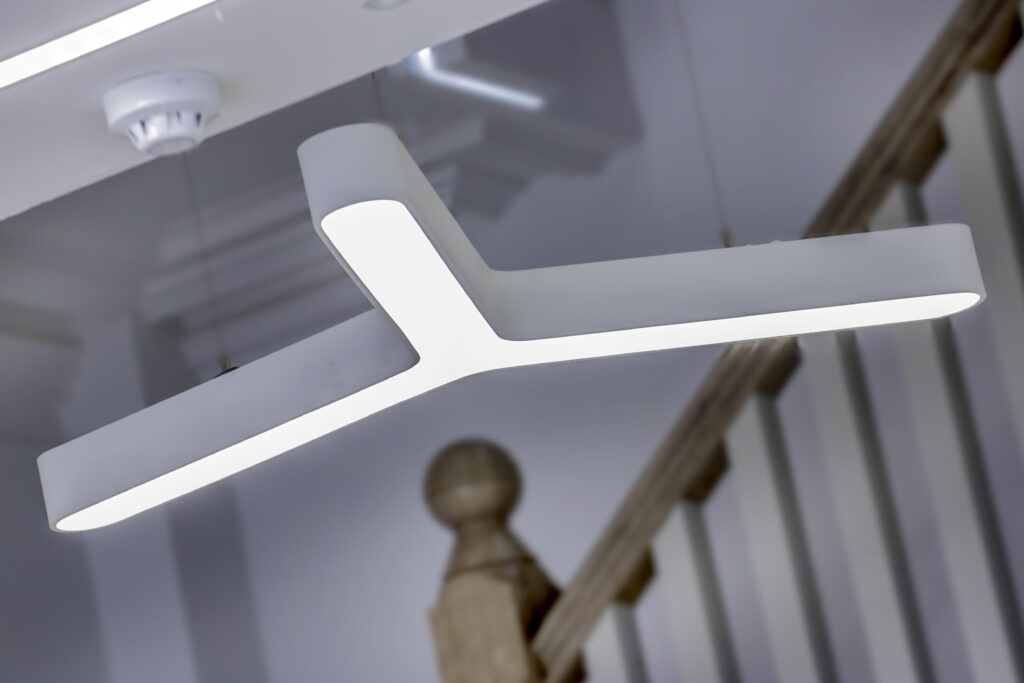
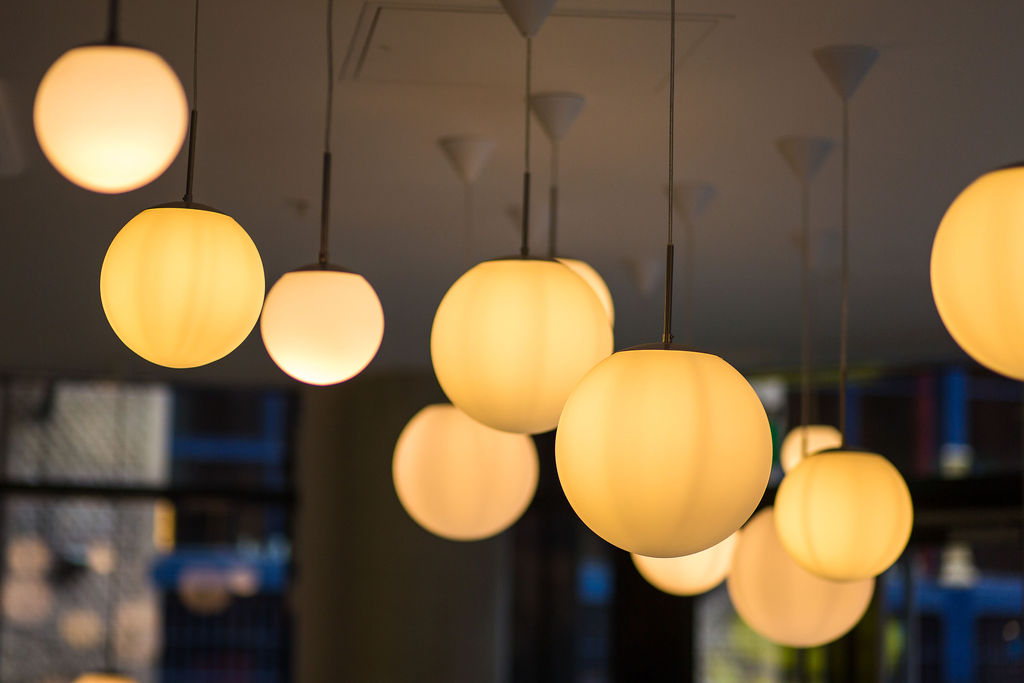
Colour Temperature and Rendering
The colour temperature of lighting can greatly influence the atmosphere and functionality of different areas within the office. Warm tones (e.g., 2700-3000K) create a cozy and relaxing environment, making them suitable for break areas and common spaces where employees can unwind. Cooler tones (e.g., 4000-5000K) promote focus and alertness, making them ideal for work areas and meeting rooms. Additionally, selecting lighting with a high Color Rendering Index (CRI) is important, especially in areas where colour distinctions are necessary for tasks. High CRI lighting ensures accurate colour recognition, which is particularly important in design studios, art spaces, or areas where employees work with printed materials or digital media
Energy Efficiency
Incorporating energy-efficient lighting systems reduces electricity consumption and contributes to environmental sustainability. LED lighting systems are known for their energy efficiency and long lifespan. By switching to LED lights, offices can significantly decrease energy consumption and decrease maintenance costs. Another energy-saving measure is the installation of occupancy sensors, which automatically adjust lighting levels based on activity and occupancy. This prevents lights from being unnecessarily left on in unoccupied areas, leading to substantial energy savings over time
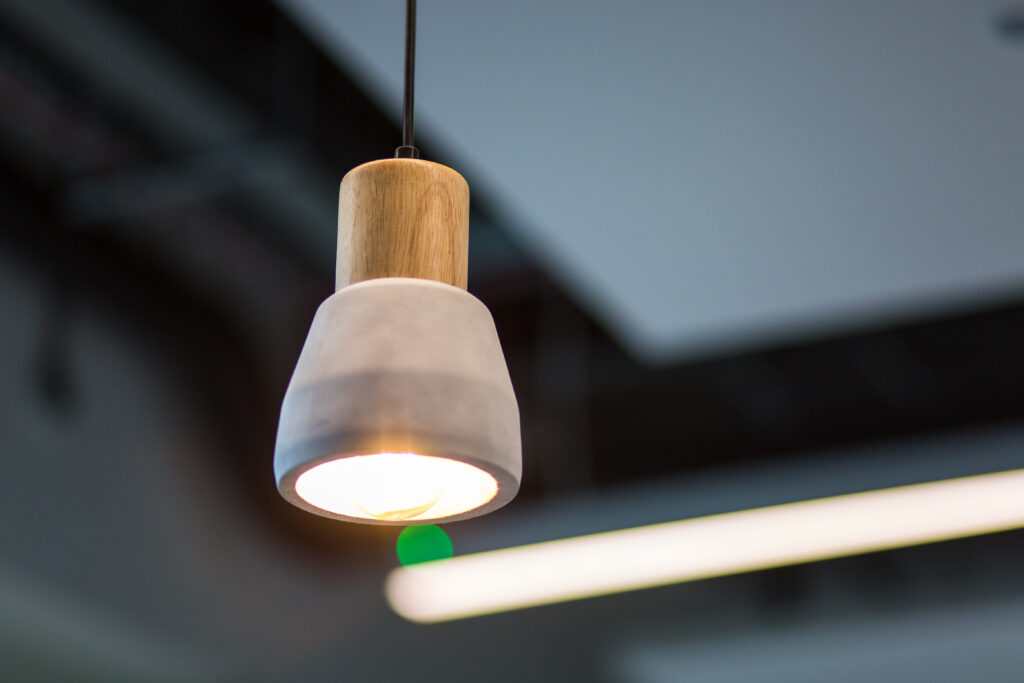
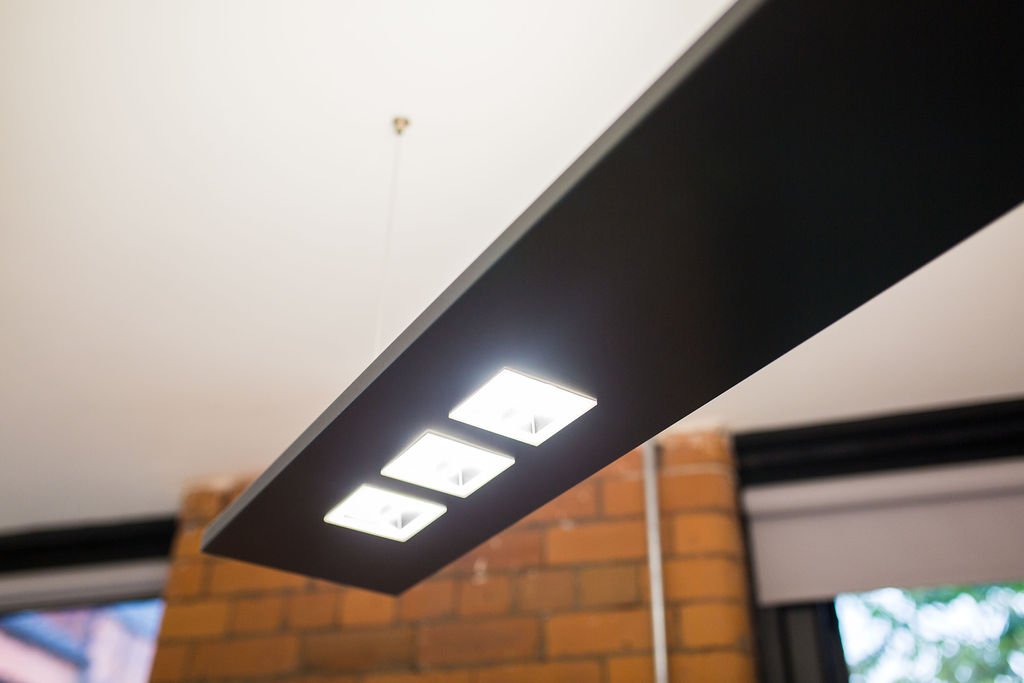
Aesthetics and Ambiance
Lighting design is crucial in creating an office environment that reflects the company’s brand and promotes a positive ambience. The selection of fixture designs that complement the overall office design can enhance the visual appeal and professionalism of the space. Incorporating dimmable lighting systems allows for flexibility and the creation of different atmospheres throughout the day. For example, adjustable lighting levels can be used to create a brighter and more energetic environment for morning meetings, while dimmed lights can promote relaxation during lunch breaks. The ability to adjust lighting according to different activities or moods contributes to employee satisfaction and overall comfort in the workplace
Health and Wellbeing
Considering the impact of lighting on employee health and well-being is an essential aspect of office design. Circadian lighting is a design principle aimed at mimicking natural daylight patterns to support the body’s natural sleep-wake cycle. Properly designed circadian lighting can improve sleep quality, mood, and productivity. Minimising exposure to excessive blue light in the afternoon and evening helps promote better sleep patterns among employees, as blue light can disrupt the natural sleep cycle. Providing lighting solutions that help regulate employees’ internal body clocks can have a significant positive impact on their overall health and well-being
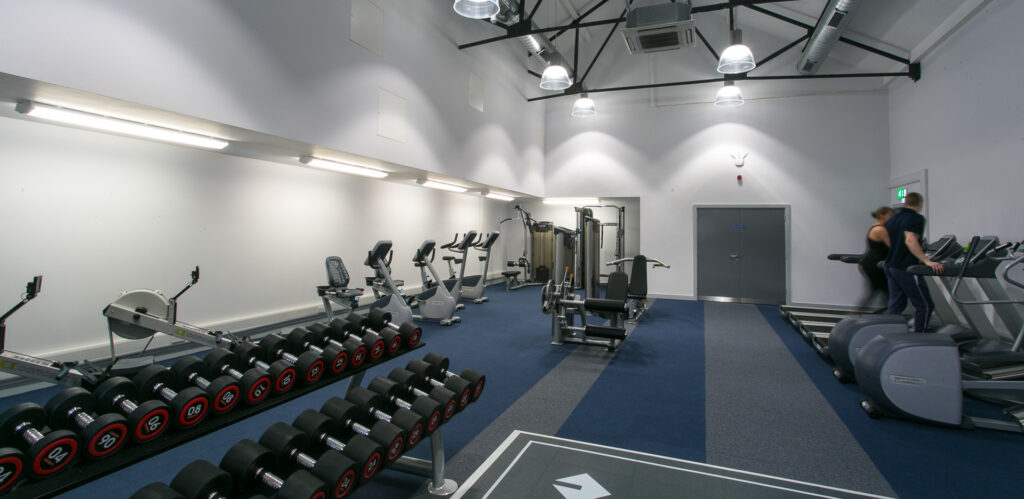

Highlighting key features
Lighting can play a crucial role in highlighting specific interior design features and architectural elements within an office space. By strategically placing lights, designers can draw attention to key focal points, enhance the overall aesthetics, and create a visually pleasing environment. Accent lighting can be used to highlight artwork, decorative wall panels, and architectural details, while wall grazing or washing lighting can bring out the texture and pattern of wall surfaces. Cove lighting creates a soft and elegant ambience, pendant or chandelier lighting serves as statement pieces, and backlighting or silhouette lighting adds depth and drama to the overall design
Lighting control
Implementing smart controls allows for the effortless adjustment of light levels based on user preferences, specific activities, or the time of day. The division of the office into zones with individualised lighting controls promotes targeted adjustments, accommodating diverse tasks and preferences. User-friendly interfaces ensure ease of use, fostering accessibility for all occupants. Integrating lighting controls with other building automation systems or smart technologies optimises energy efficiency and creates a seamless user experience.
Scheduled controls can automate lighting changes throughout the day, aligning with natural light patterns and occupancy schedules. Additionally, monitoring and maintenance systems should be in place to promptly address issues, ensuring consistent and reliable lighting performance over time
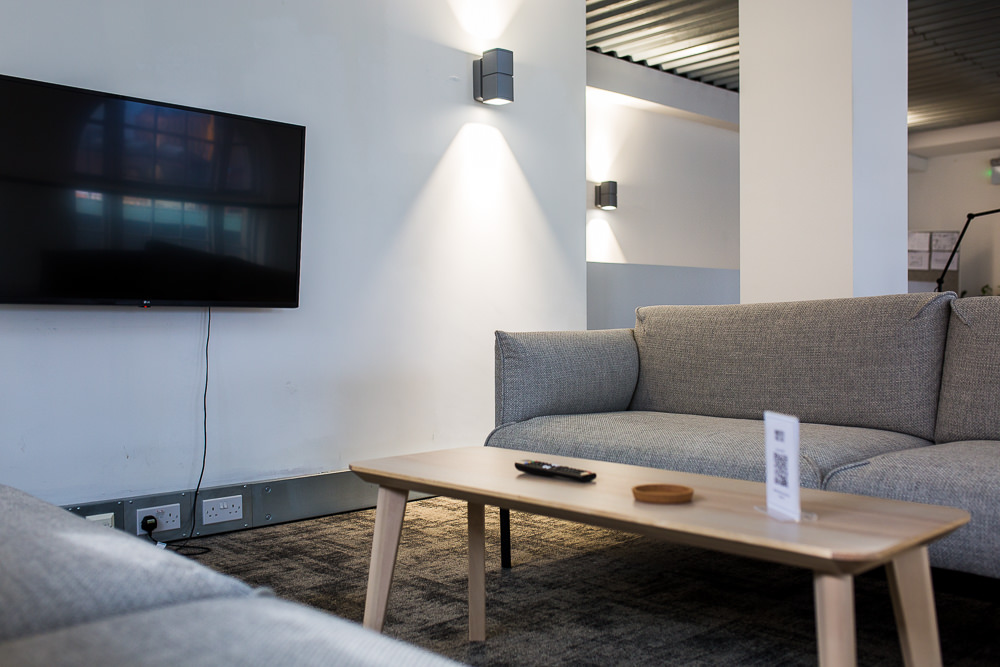
By taking into account these key considerations, office lighting design not only enhances the visual appeal of the workspace but also contributes to the comfort, productivity, and overall well-being of employees. A thoughtfully designed lighting system promotes a positive work environment where employees can thrive and feel their best, leading to increased job satisfaction and performance
Drop us a line and let’s create a productive, happy environment for you and your team

